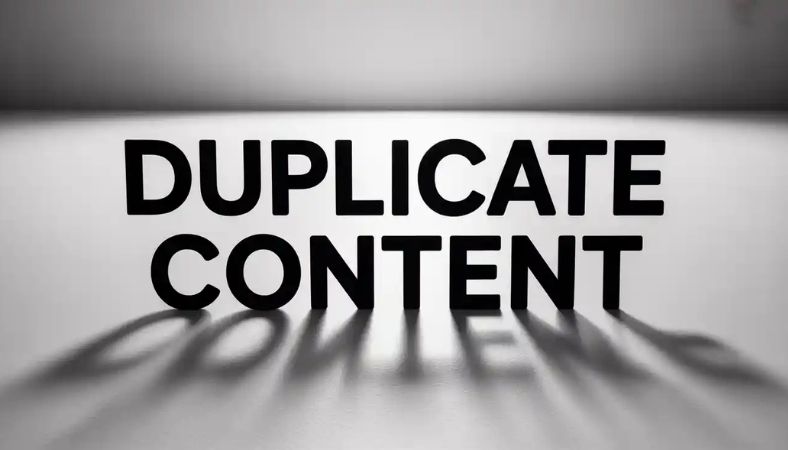Introduction of Fix duplicate content
In the online space, content holds the highest value. Duplicate content is one of the major challenges faced by webmasters, SEO practitioners, and content producers. It can be defined as the situation where identical or closely matching content exists on multiple pages or websites. Duplicate content not only creates confusion for search engines but also can damage a site’s ranking, limiting its visibility on search engine results pages (SERPs). Master SEO content structure to optimize your website, improve rankings, and drive more traffic for better visibility.
In this article, we will discuss everything you need to know regarding the removal of duplicate content along with actionable steps that can assist in restoring your site’s SEO health. We’ll define duplicate content, discuss why it is an issue, and provide steps to identify, prevent, and resolve this problem to improve search rankings and enhance user experience.

What is Duplicate Content?
Duplicate content refers to content that exists in more than one location on the internet. It can exist on one site in multiple pages or even across multiple websites. Google, like most other search engines, tends to punish sites with duplicate content since it creates challenges in deciding which page should rank for a specific query.
- Internal Duplicate Content: This is when the same information is included on several pages of your website. An example would be when a product description is identical and replicated across several product or category pages.
- External Duplicate Content: This happens when content that is found on another website is brought over to your site.
Duplicate content, in most cases, is the outcome of some technical problems like wrong URL settings or the way content is syndicated.
The Dangers of Duplicate Content for SEO
The issue of content duplication can negatively influence all the hard work done on the SEO of a website. Here is what matters:
- Search Engines Lose Determination: If there are several different versions of a piece of content, search engines will have a hard time determining which version carries more value and should rank higher. In such cases, they may end up ignoring one of the pages altogether, with the result that it will lose its potential to rank.
- Links which point to duplicate content get split among the different versions which lowers the total link equity that could have been used to help one page rank higher.
- Search engines have a limited crawl budget, which refers to the number of pages on your site that they can index. Duplicate content wastes this budget and causes important pages to be crawled less often.
- User Experience: Encountering duplicate content across different web pages can be frustrating for users who wish to access valuable information and resources.
How to Find Duplicate Content on Your Website
Identifying duplicate content is the first step in resolving the issue. Below are some methods you can follow to detect duplicate content on your site:
- Use Google Search: Check for duplicates by searching sentences or paragraphs verbatim using quotation marks (“”). If other sites show up with the same content, that’s external duplication.
- Google Search Console: This tool provides a specific report on “Duplicate Content” which helps in identifying cases of internal duplication across the website.
- Online Tools: There are tools like Copyscape, Siteliner, and Screaming Frog which can analyze your site and find duplicate content.
How To Resolve Duplicate Content Issues: Step By Step
Having understood the various forms of duplicate content, here are some actionable strategies to eliminate it:
Use 301 Redirects
In cases where duplicate pages stem from outdated or broken URLs, implementing 301 redirects to direct search engines and users to the preferred page is best recommended. This approach merges link equity and informs search engines that one page is the authoritative version, streamlining SEO optimization.
Use Canonical Tags
Using a canonical tag (rel=”canonical”) informs search engines about the primary version of a page. This is helpful when content appears on different pages because of sorting or filtering. For instance, if a product page exists in several categories, a canonical tag can be set to the main product page.
Do Not Use Index, No Follow Tags
You may use noindex, no follow meta tags on pages that have little to no search engine optimization (SEO) value. Thank you pages of forms and login pages are examples of such pages. These pages will not be indexed by search engines and will not lose link equity.
Remove Duplicate Content
When looking for information, users are presented with multiple web pages that contain similar content. Users should be able to find information in a single page rather than having to sift through several pages. When multiple pages containing similar information are found, all the information should merge with better quality content. This reduces duplicate content and enhances the content’s quality.
Use URL Parameters Correctly
In some cases, duplicate content occurs due to URL parameters. Inform Google on how to treat URL parameters using Google Search Console’s URL Parameters Tool. Also, ensure that your URLs are neat and uniform.
Refresh Content
Make sure your content is original, useful, and updated frequently. Newer content is a stronger signal to search engines that your website is alive and engaging.
Safeguards Against Future Duplicate Content
Just like fixed duplicate content is important, preventing it is equally as vital. Here are methods to defend your site from being duplicated in the future.
- Content Management: Make sure the Content Management System (CMS) you are using deals with the URL structure and redirects accurately.
- Content Recyndication: When republishing content on other sites, be sure to wrap a < rel “canonical” > tag returning to the content.
- Content Distribution: Strategic planning of content creation and dissemination goes a long way. Be careful not to replicate article, product description or blog post.
E-commerce Website Case Study: Fixing Duplicate Content
We will explore a case study and see how an e-commerce website tackled the challenge of duplicate content.
Problem: An online retailer had product pages that were duplicated across several categories (e.g., “Shoes” and “Summer Shoes”) along with identical descriptions.
Solution:
- Canonical Tags: The retailer implemented canonical tags on the category pages pointing to the main product page.
- 301 Redirects: They deleted redundant category pages and implemented 301 redirects.
- Product Descriptions: Every product’s description was modified to reflect more specificity and uniqueness for each product section.
- Outcome: Within months, free traffic increased by 25%. Alongside this, the site’s ranks for these products improved considerably.
Comparison Table: Canonical vs. 301 Redirects
| Method | When to Use | Advantages | Disadvantages |
|---|---|---|---|
| Canonical Tag | When you have similar content on multiple pages | Preserves link equity, easy to implement | Doesn’t redirect traffic to the main page |
| 301 Redirect | When the content is outdated or no longer relevant | Consolidates link equity, sends visitors to the main page | May cause some traffic loss if not set up correctly |
FAQs about Fix duplicate content
What are possible reasons for duplicate content to exist?
Possibly originating from a plethora of sources consisting of URL parameters, copied content from other websites, problematic syndication, or lack of sound website hierarchies.
What are the potential effects of duplicate content on SEO?
This could result in ranking paradox for search engines, dilute the link equity and search engines ignoring pages deemed duplicate – affecting visibility.
What are the canonical tags intended for?
Canonical tags are meant for telling search engines which version of a page should be considered the main one and eliminates the competition of multiple versions of the same content fighting over the ranks.
How To Check For Duplicate Content On My Site
Tools such as Google Search Console, Copyscape, and Screaming Frog will help you find and flag duplicate content on your website.
Is It Possible To Solve The Problem Of Duplicate Content?
Absolutely, you can solve the problem of duplicate content by removing them through methods such as 301 redirects, canonical tags, and altering your content strategy to focus on original content.
Conclusion
Even though duplicating text may seem harmless, it can greatly affect the SEO and user engagement on your site. Fixing the problem by identifying the cause and using the appropriate methods, which could include applying canonical tags, 301 redirects, or merging content, can keep your website optimized and help gain a higher ranking on search engines.
Also, it is essential to focus on avoiding the issue as well. Develop a well-defined content plan, optimize the CMS, and make regular site updates to improve the site’s content. Doing these things can boost the SEO rating of your website, while enhancing the experience for the users.
With the knowledge on how to manage duplicate content, it is time to put it into practice! Analyze your site, resolve problems, and see how your ranking improves.
E-E-A-T (Experience, Authoritativeness, Trustworthiness)
This guide was created with years of SEO knowledge and current industry standards8930 evaluations to keep your website running smoothly. For detailed SEO and content optimization, froze guidelines provided by John Mueller’s Google Webmaster Central and authoritative sites like Google Webmaster Guidelines and SEMrush.

